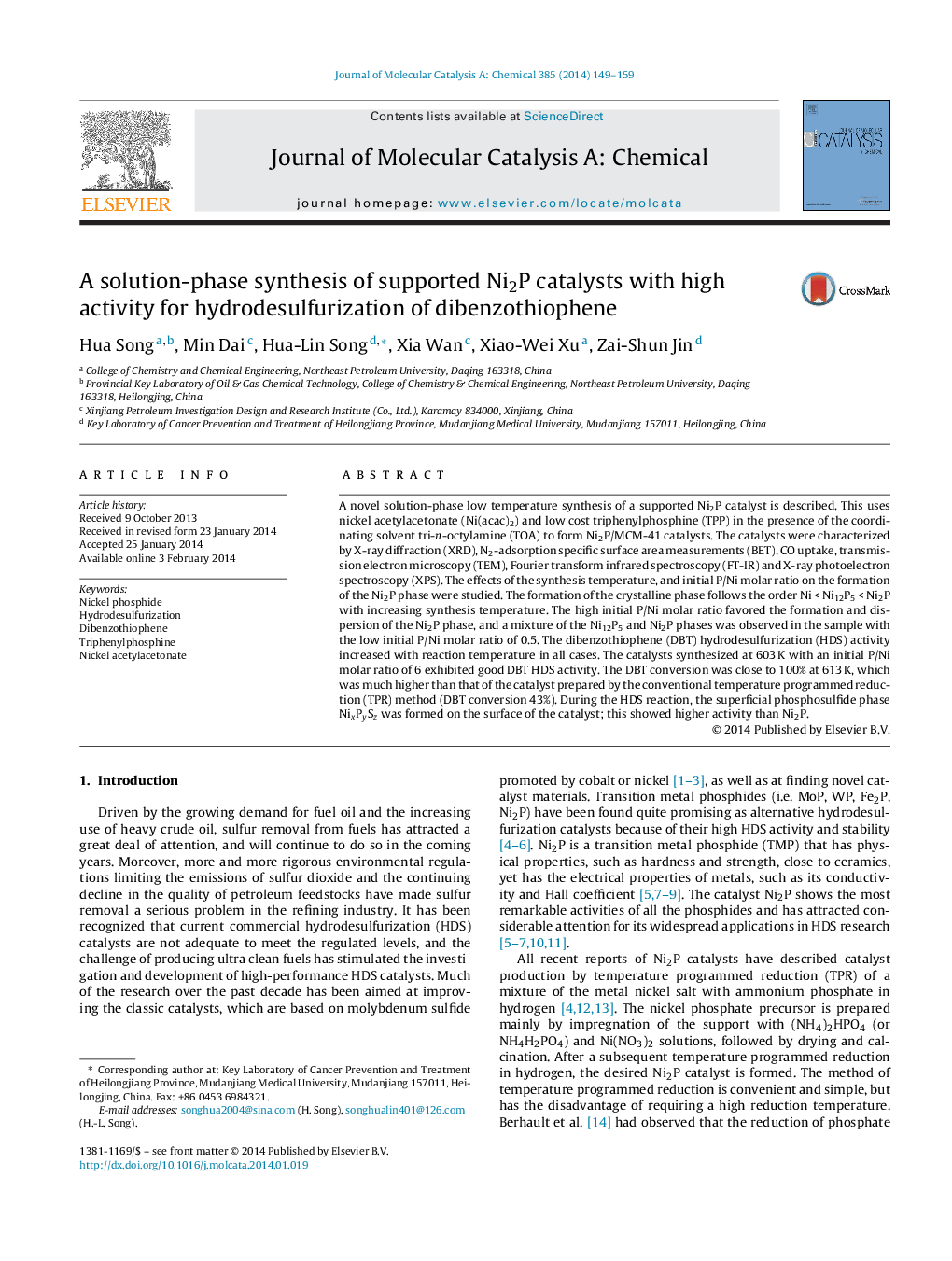| کد مقاله | کد نشریه | سال انتشار | مقاله انگلیسی | نسخه تمام متن |
|---|---|---|---|---|
| 65734 | 48401 | 2014 | 11 صفحه PDF | دانلود رایگان |

• A solution-phase approach to prepare Ni2P/MCM-41catalysts based on Ni(acac)2 and TPP was described.
• The catalysts were synthetized under mild temperature and atmospheric pressure.
• The phosphorous precursor and TOA used in our approach are cheap.
• The catalysts obtained by the proposed approach showed high HDS activity and dispersion.
A novel solution-phase low temperature synthesis of a supported Ni2P catalyst is described. This uses nickel acetylacetonate (Ni(acac)2) and low cost triphenylphosphine (TPP) in the presence of the coordinating solvent tri-n-octylamine (TOA) to form Ni2P/MCM-41 catalysts. The catalysts were characterized by X-ray diffraction (XRD), N2-adsorption specific surface area measurements (BET), CO uptake, transmission electron microscopy (TEM), Fourier transform infrared spectroscopy (FT-IR) and X-ray photoelectron spectroscopy (XPS). The effects of the synthesis temperature, and initial P/Ni molar ratio on the formation of the Ni2P phase were studied. The formation of the crystalline phase follows the order Ni < Ni12P5 < Ni2P with increasing synthesis temperature. The high initial P/Ni molar ratio favored the formation and dispersion of the Ni2P phase, and a mixture of the Ni12P5 and Ni2P phases was observed in the sample with the low initial P/Ni molar ratio of 0.5. The dibenzothiophene (DBT) hydrodesulfurization (HDS) activity increased with reaction temperature in all cases. The catalysts synthesized at 603 K with an initial P/Ni molar ratio of 6 exhibited good DBT HDS activity. The DBT conversion was close to 100% at 613 K, which was much higher than that of the catalyst prepared by the conventional temperature programmed reduction (TPR) method (DBT conversion 43%). During the HDS reaction, the superficial phosphosulfide phase NixPySz was formed on the surface of the catalyst; this showed higher activity than Ni2P.
Figure optionsDownload high-quality image (333 K)Download as PowerPoint slide
Journal: Journal of Molecular Catalysis A: Chemical - Volume 385, April 2014, Pages 149–159